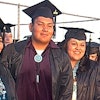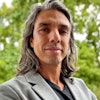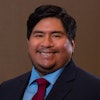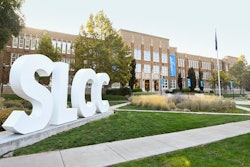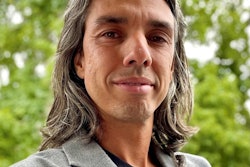DAVIS, Calif.
On a remote stretch of land where stray chickens outnumber students, California’s only tribal college is clinging to life against seemingly insurmountable odds.
D-Q University has had a turbulent history, which includes land disputes with the neighboring University of California, low enrollment and a loss of federal accreditation.
But even its most ardent supporters acknowledge that the school has hit an all-time low.
In June, the board dismissed the university’s interim president, Art Apodaca, accusing him of squandering the school’s few remaining assets. It also rejected his proposal to boost enrollment by dividing D-Q into an Indian-only “D” school and a separate, non-Indian “Q” school.
With the remaining six students drifting away and no money for even a working telephone line, a handful of board members and community volunteers are desperately searching for a way to keep the school and its mission alive.
“Every day it’s a new crisis,” said Susan Reece, a former board. “Every day there’s a new group of bills and new debts we didn’t know about.”
In early August, the six-member board decided to abandon its efforts to keep students on campus for the fall semester. Instead, it will try to attract revenue by cleaning up the campus and renting it out for workshops and conferences.
Reece said her biggest fear is that D-Q will lose its 600 acres to the federal government if it is found to be violating its federal property deed. The deed stipulates that the land must be maintained as an educational institution.
The demise of D-Q University would deal a heavy blow to the tribal college movement, supporters say. The school was one of the six original tribal colleges in the United States, all founded between 1968 and 1972. That group created the American Indian Higher Education Consortium in 1972 to address common challenges such as fundraising and attracting qualified faculty.
Nationwide, the U.S. Department of Education recognizes 34 tribal colleges, most of which are two-year schools.
Indian students “were failing miserably in mainstream institutions before the tribal college movement came around,” said Gerald Gipp, executive director of the Virginia-based consortium.
While many of the current colleges are thriving, he said they have faced their share of hardships. For example, the schools receive about $4,400 per student from the federal government — far less than their average annual expenses require.
In addition, many of the schools are geographically isolated and have to provide basic coursework to students who arrive with a sub-par high school education, he said.
Stable leadership and support from a tribal government and the surrounding community are crucial to a tribal college’s success, Gipp said. But he added that ultimately, D-Q and other struggling schools must figure out their own solutions.
“What does it take to develop a viable institution?” he asked. “We haven’t really answered that question at this point.”
At its peak in the mid-1990s, D-Q University accommodated more than 500 students a year and offered associate degrees, a GED program and various vocational programs. It began unraveling a few years ago.
The Department of Education in 2004 found that university administrators had withdrawn $350,000 from the school’s permanent endowment to pay salaries and expenses. The department said the school also violated federal financial aid regulations by issuing Pell Grants to students who were either no longer enrolled or no longer eligible because of poor grades.
The Western Association of Schools and Colleges revoked D-Q’s accreditation in January 2005, stripping the school of its ability to grant degrees or offer course credits that students could transfer to other institutions.
But supporters refused to abandon the school, despite the bolted gates and “no trespassing” signs posted outside.
When he stepped in as interim president of D-Q in August 2005, many saw Apodaca as the school’s long-awaited savior. He said he planned to return the school back to what he described as its original mission: to serve both federally recognized American Indians and Hispanics.
What happened at D-Q over the next 10 months is the subject of fierce debate between the current board, Reece and other community supporters on one side, and Apodaca and several former board members and former D-Q staff members on the other. Both sides have raised accusations of deceit, theft and racism.
Apodaca’s critics say he was attempting to chip away at the school’s tribal identity to create a Hispanic-dominated institution. They say he also kept the board in the dark about his spending and hiring practices, adding unapproved staff to the payroll and depleting nearly all the school’s remaining $120,000 endowment.
“D-Q is a bruised and battered child,” Reece said. “We thought Art would help us recover, but he incurred even greater damage.”
Apodaca says the board is to blame for D-Q’s troubles.
“These folks, in an attack of ignorance and racism, they removed me,” said Apodaca, who is Hispanic. “They took the idea of an institution that could be a voice of the original people of the Americas, and they reduced it to a two-year college with a selective enrollment policy.”
Both sides have threatened legal action against each other, but for now, what remains of the conflict is a mountain of bills and a lot of anger, pain and uncertainty.
Perhaps no one understands that better than the students themselves.
Manda Vann, D-Q’s former student body president, witnessed the upheaval over the past few years. She was one unit away from graduating with an associate’s degree when the school lost its accreditation.
A family emergency in late July forced her to return home, where Reece contacted her to tell her about the board’s decision to send the students away indefinitely.
“It could be a totally native university, with a curriculum based toward health issues, land issues, water issues — the stuff our people need,” said Vann, whose ancestry includes the Western Band Cherokee and Washo tribes. “A lot of our people need healing, and we could learn how to help them in our own setting, our own situation.”
Vann will attend Sacramento State University in the fall, transferring the credits she received from D-Q before 2005.
For her part, Reece plans to keep fighting for the school until every option has been exhausted, even if she is eventually the only one.
“D-Q is barely breathing,” she said. “But I still feel there’s life out there.”
–Associated Press
|
Reader comments on this story: |
|
There are currently no reader comments on this story. |
© Copyright 2005 by DiverseEducation.com

